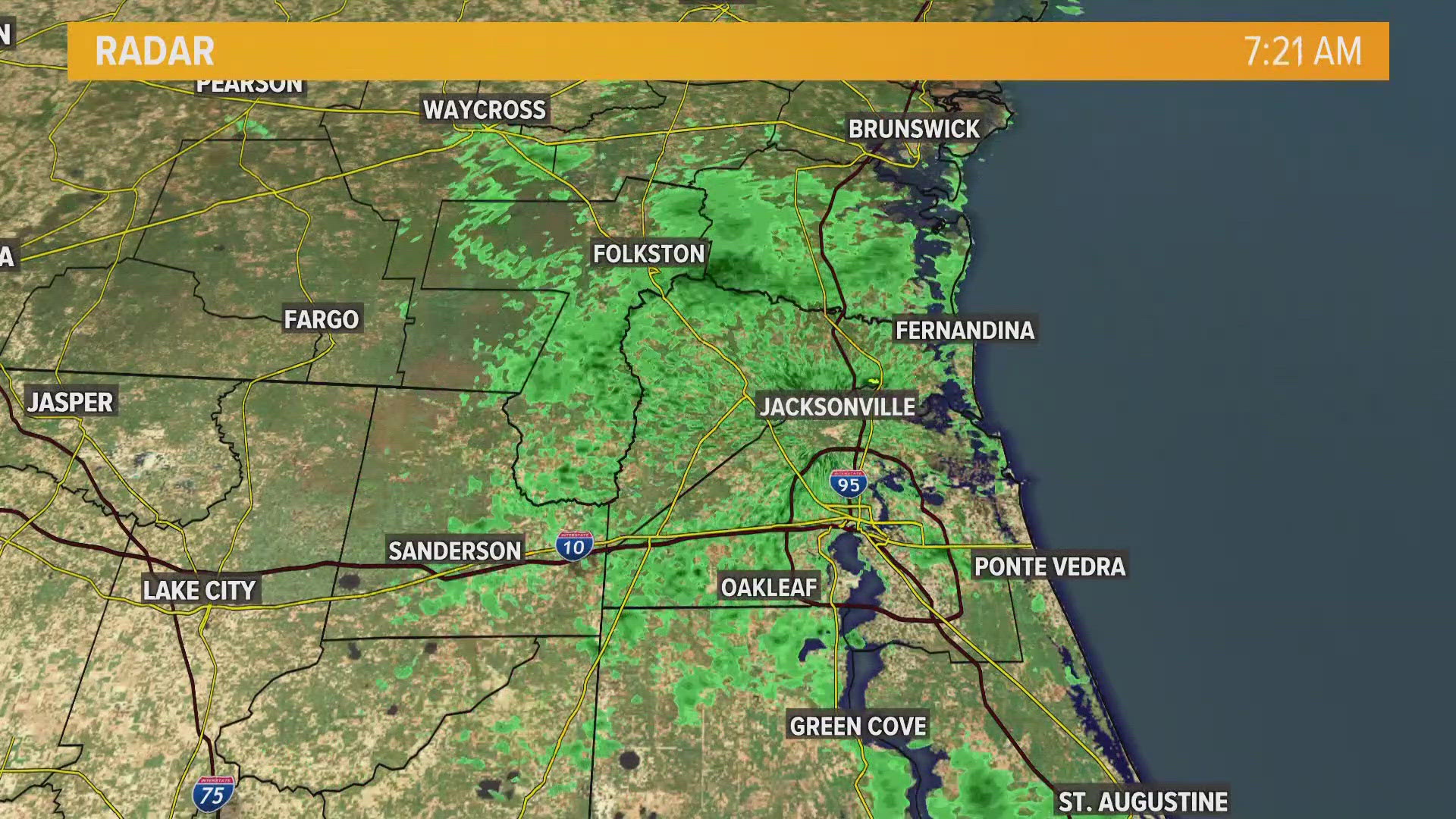JACKSONVILLE, Fla. — Early Sunday morning, images from Jacksonville's radar showed unexpected activity that might have puzzled anyone checking the First Coast News weather app.
At first glance, the radar seemed to suggest quick-hitting rainfall. But with clear skies and no precipitation reported across the First Coast, meteorologists turned to another explanation: birds.
Weather radars, primarily used to detect precipitation and storm systems, work by emitting electromagnetic signals. These signals travel outward until they encounter an object, then bounce back toward the radar site. By analyzing the time it takes for the signal to return and its strength, radars help meteorologists pinpoint the distance, size and density of the object.
While radars typically track clouds and precipitation, under the right conditions, they can pick up much more. Calm, cool mornings often provide a good setup for detecting birds leaving their nesting sites. The radar images from Sunday morning show scattered patches of activity across the First Coast, which are likely signatures of birds in motion.
Based on the visual, the images are not ground clutter as it is not where you typically see it and not just around the radar site. Plus, the quick movement right at sunrise suggests something rising with the sun likely birds.
Such radar phenomena, sometimes called “bird migration echoes” or “bioscatter,” occur when migrating or roosting birds take to the skies in large numbers.
So, if you spotted unusual patterns on the radar this weekend, it wasn’t a rainstorm sneaking in.



